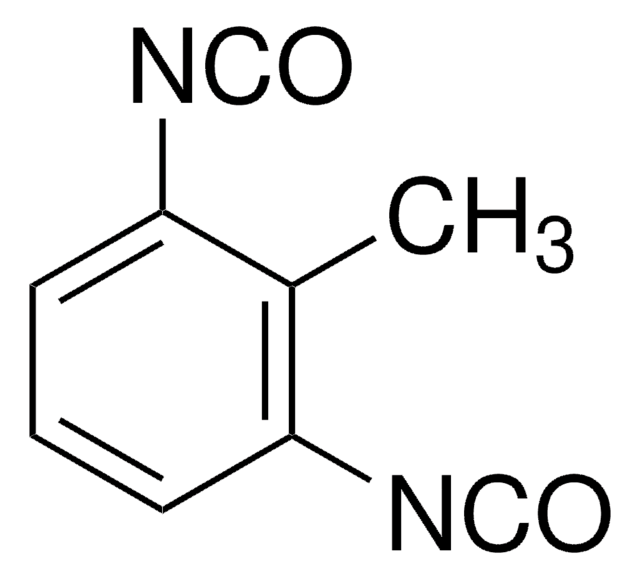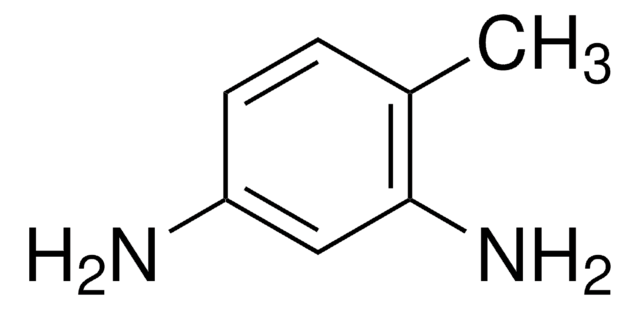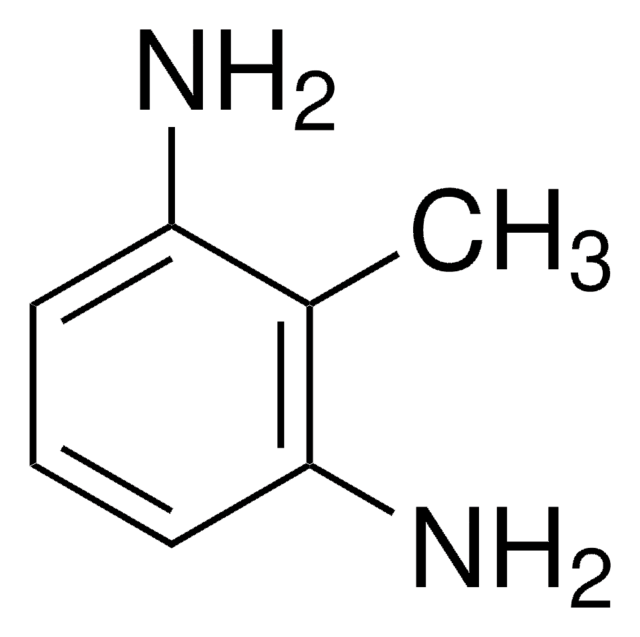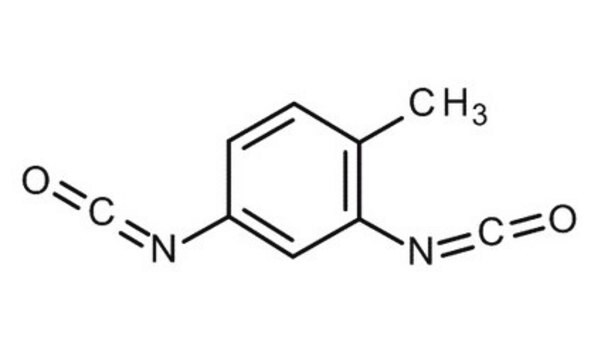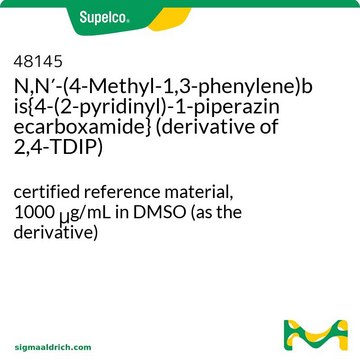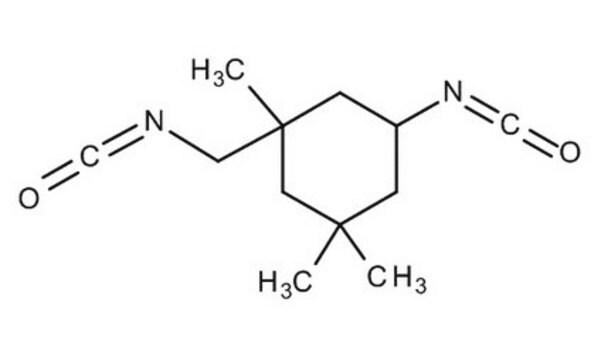33427
Toluene 2,4-diisocyanate
analytical standard
Sinónimos:
Toluene 2,4-diisocyanate, 2,4-Diisocyanatotoluene, 4-Methyl-m-phenylene diisocyanate, Tolylene 2,4-diisocyanate
About This Item
Productos recomendados
grade
analytical standard
shelf life
limited shelf life, expiry date on the label
technique(s)
HPLC: suitable
gas chromatography (GC): suitable
bp
124-126 °C/18 mmHg (lit.)
251 °C (lit.)
mp
19.5-21.5 °C (lit.)
density
1.22 g/mL at 20 °C (lit.)
application(s)
cleaning products
cosmetics
environmental
food and beverages
personal care
format
neat
storage temp.
room temp
SMILES string
Cc1ccc(cc1N=C=O)N=C=O
InChI
1S/C9H6N2O2/c1-7-2-3-8(10-5-12)4-9(7)11-6-13/h2-4H,1H3
InChI key
DVKJHBMWWAPEIU-UHFFFAOYSA-N
¿Está buscando productos similares? Visita Guía de comparación de productos
General description
Find all available reference materials for compounds listed in 10/2011 here
Application
signalword
Danger
Hazard Classifications
Acute Tox. 1 Inhalation - Aquatic Chronic 3 - Carc. 2 - Eye Irrit. 2 - Resp. Sens. 1 - Skin Irrit. 2 - Skin Sens. 1 - STOT SE 3
target_organs
Respiratory system
Storage Class
6.1A - Combustible acute toxic Cat. 1 and 2 / very toxic hazardous materials
wgk_germany
WGK 2
flash_point_f
269.6 °F - closed cup
flash_point_c
132 °C - closed cup
ppe
Eyeshields, Faceshields, Gloves, type ABEK (EN14387) respirator filter
Elija entre una de las versiones más recientes:
Certificados de análisis (COA)
¿No ve la versión correcta?
Si necesita una versión concreta, puede buscar un certificado específico por el número de lote.
¿Ya tiene este producto?
Encuentre la documentación para los productos que ha comprado recientemente en la Biblioteca de documentos.
Los clientes también vieron
Protocolos
HPLC Analysis of Isocyanates on Titan™ C18
Nuestro equipo de científicos tiene experiencia en todas las áreas de investigación: Ciencias de la vida, Ciencia de los materiales, Síntesis química, Cromatografía, Analítica y muchas otras.
Póngase en contacto con el Servicio técnico